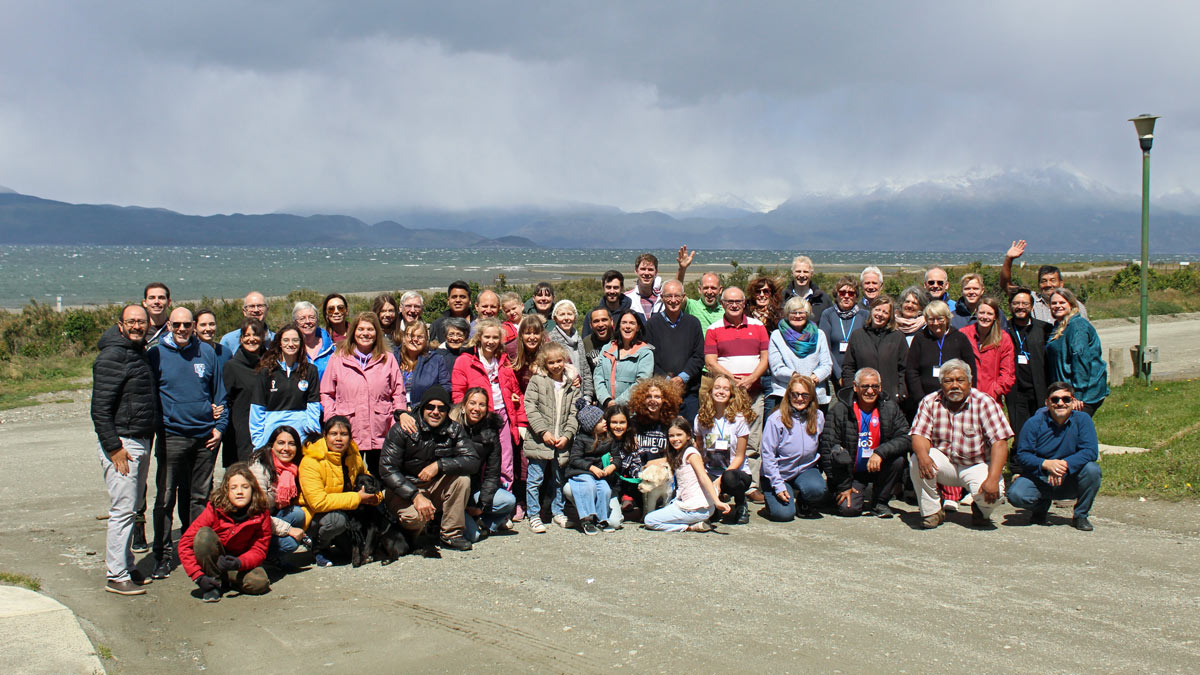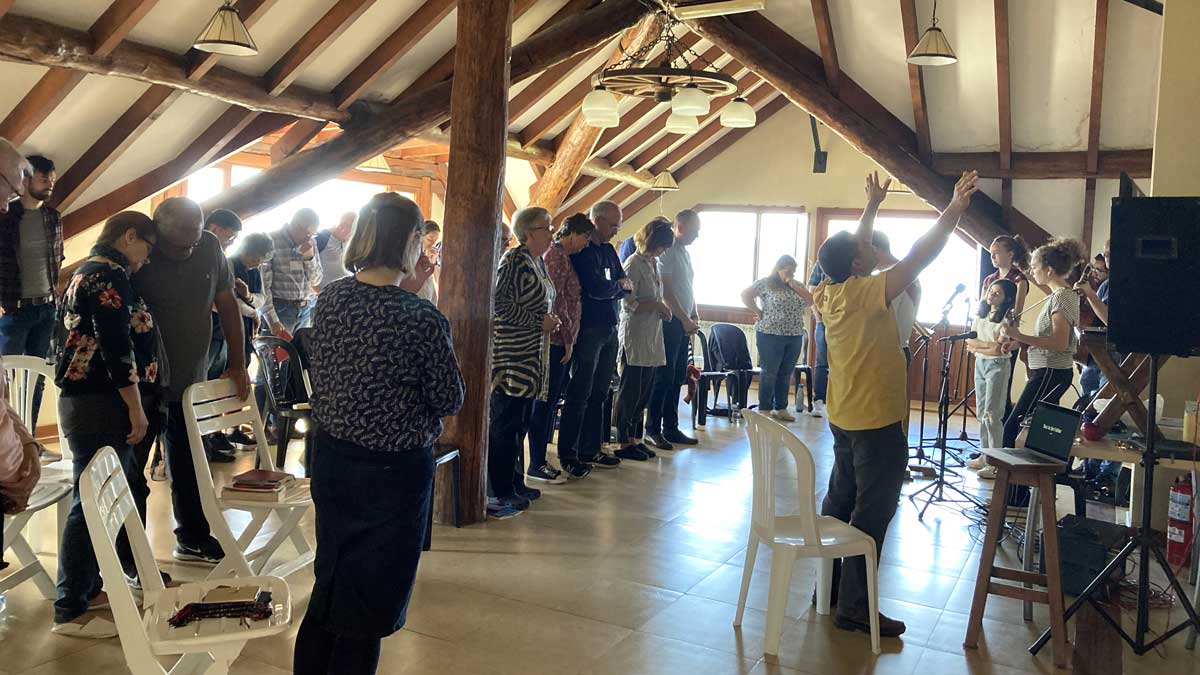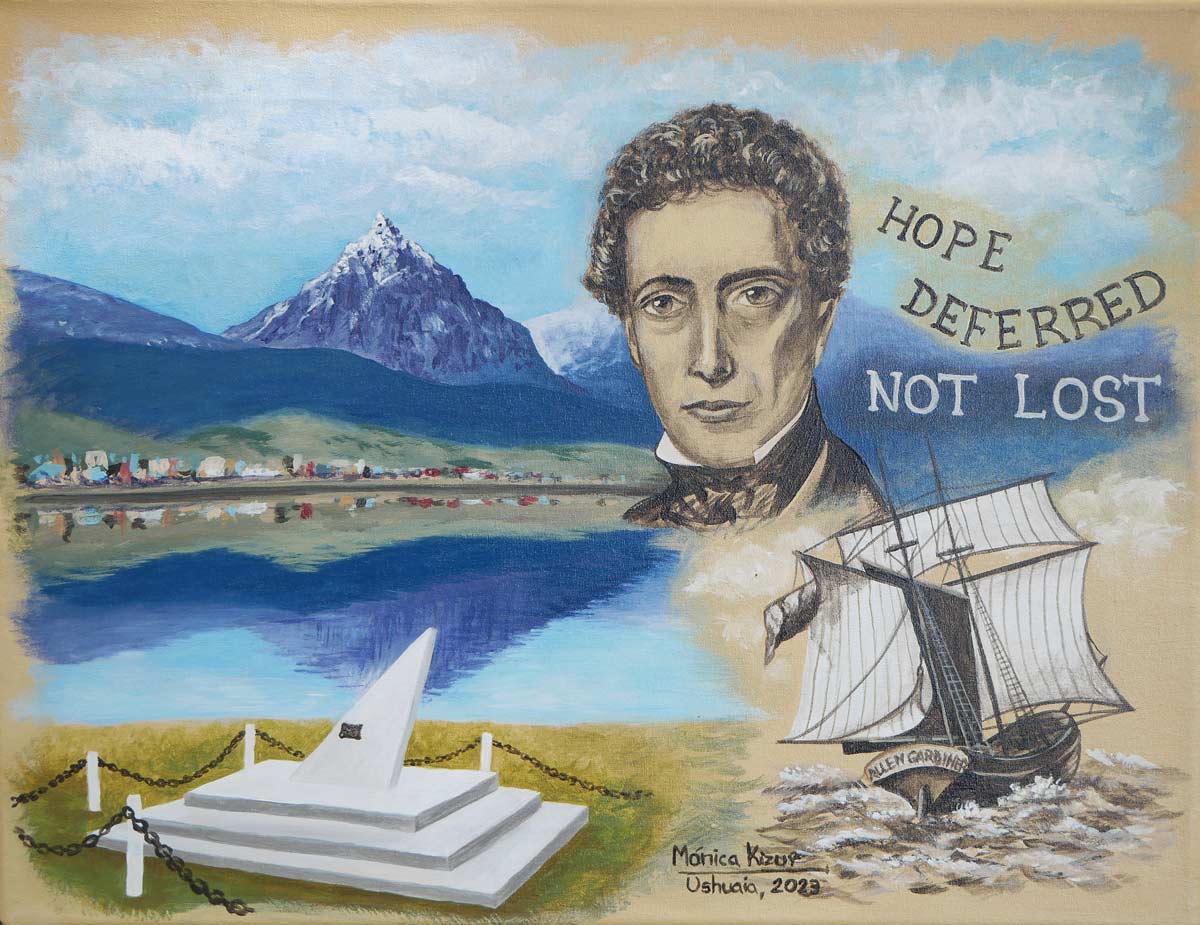Hope deferred, not lost
At the end of the world, CMS people in mission in Latin America reconnected with history and found renewed purpose
Photo: The waters of Ushuaia today, with the mountains of Tierra del Fuego in the background
In 1851, a group of British missionaries starved to death at the southernmost tip of South America without having shared the gospel. So why would a group of CMS people in mission working across Latin America choose this location for a gathering? CMS personnel lead for Latin America Jo Anthony reflects on mission past and present.
It wasn’t a promising start to mission work – Captain Allen Gardiner and his six colleagues had felt called to take the gospel to the Fuegian indigenous peoples at the very “end of the earth”. However, fierce weather, isolation and a series of errors led to disease and death, and the whole party perished within a few months. Despite these beginnings, it was from this endeavour near the modern-day town of Ushuaia in Argentina that the Patagonian Missionary Society (later the South American Mission Society (SAMS), now part of Church Mission Society) was formed.

Indigenous focus
These first missionaries were followed by others from the Patagonian Missionary Society, who connected with the Yaghan people by bringing small groups of them to the Falkland Islands, where the missionaries were initially based. However, the missionaries’ first attempts to settle in Tierra del Fuego (islands at the southern tip of South America) resulted in eight of them being killed by Yaghan people in 1859. But in spite of this harrowing setback, the mission continued and relationships improved. Bishop Waite Stirling established a mission station in 1869 that effectively founded the city of Ushuaia. And one of the first missionaries to live among the Yaghan people, Thomas Bridges, learned their language and put together a grammar and dictionary. He and his family settled in Ushuaia at the mission station, where he lived for more than 20 years.
Yet as the area attracted more settlers from further north because of a gold rush and a boom in sheep farming, the indigenous groups came into conflict with the European way of life and were exposed to new diseases. The population was devastated and eventually mission endeavours among them came to an end. But that wasn’t quite the end of the story….

For nearly two centuries, indigenous groups have been a focus for SAMS and later CMS. While these peoples were often marginalised by many of those of European descent and experienced an almost unimaginable loss of lands and traditions, SAMS people in mission have walked alongside them through providing access to education, preaching the gospel, translating the Bible and teaching resources, equipping leaders and campaigning alongside indigenous groups for land rights.
The CMS group who visited Ushuaia included indigenous bishops Mateo Alto and Crisanto Rojas from the Diocese of Northern Argentina, where there are now more than 150 churches with around 15,000 members in total.
Coming full circle
As we discussed holding our first ever in-region conference of all CMS’s people in mission currently based in Latin America last year, someone suggested we meet near to where SAMS began. So, we arrived in the beautiful town of Ushuaia on 2 January 2023, to talk, listen, pray together and seek God’s will for our work, ministries and lives in Latin America and beyond.
We all knew that there was historic significance to the stunning surroundings, but we hadn’t necessarily anticipated the warm welcome we would receive from a local church community. While there are no Anglican churches or CMS work currently in Ushuaia, the pastor of the local evangelical church of El Gran Rey in the town centre was invited to our conference. He delivered a very moving account of the history of SAMS.

It was humbling and inspiring to see that he knew more about SAMS’s beginnings than most, if not all, of us who work and volunteer for CMS. He told us that he and his congregation felt much gratitude towards those first pioneers who went to the edge of the world to share the gospel, in what was then considered a difficult and inhospitable place.
Later, we visited a midweek church service at El Gran Rey and spent time sharing testimonies with each other of God’s work across Ushuaia and across Latin America. During the church service, congregation members and some of our own group had tears in their eyes as the pastor again spoke about those first missionaries who came to try to share Jesus with the Yaghan people. The church presented our group with a painting of Allen Gardiner and Ushuaia by congregation member Mónica Kizur, which is now in CMS House in Oxford.